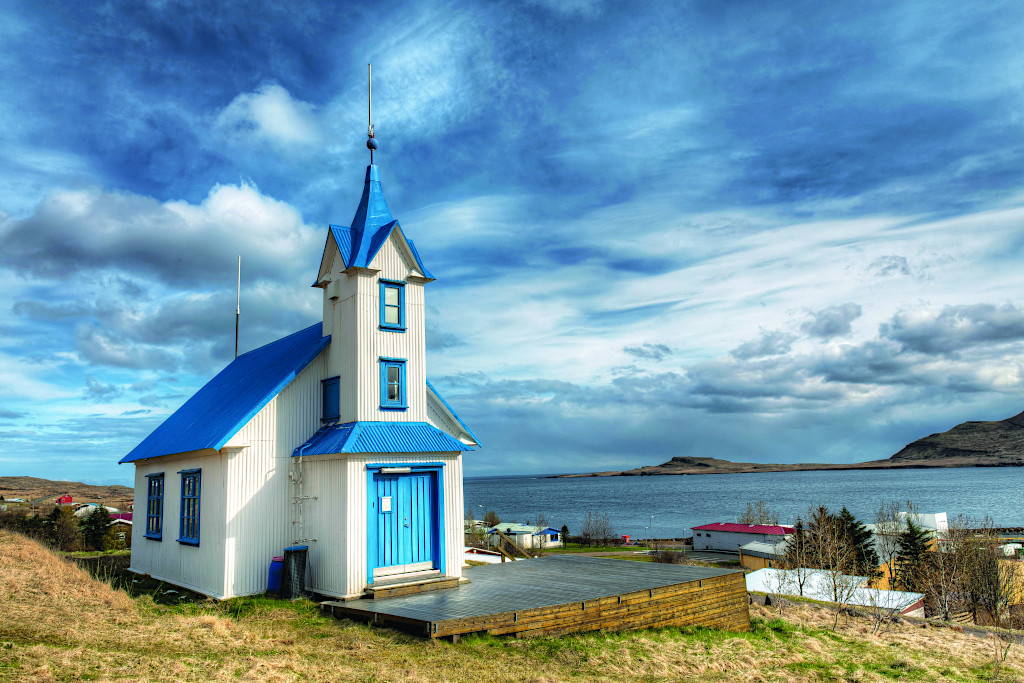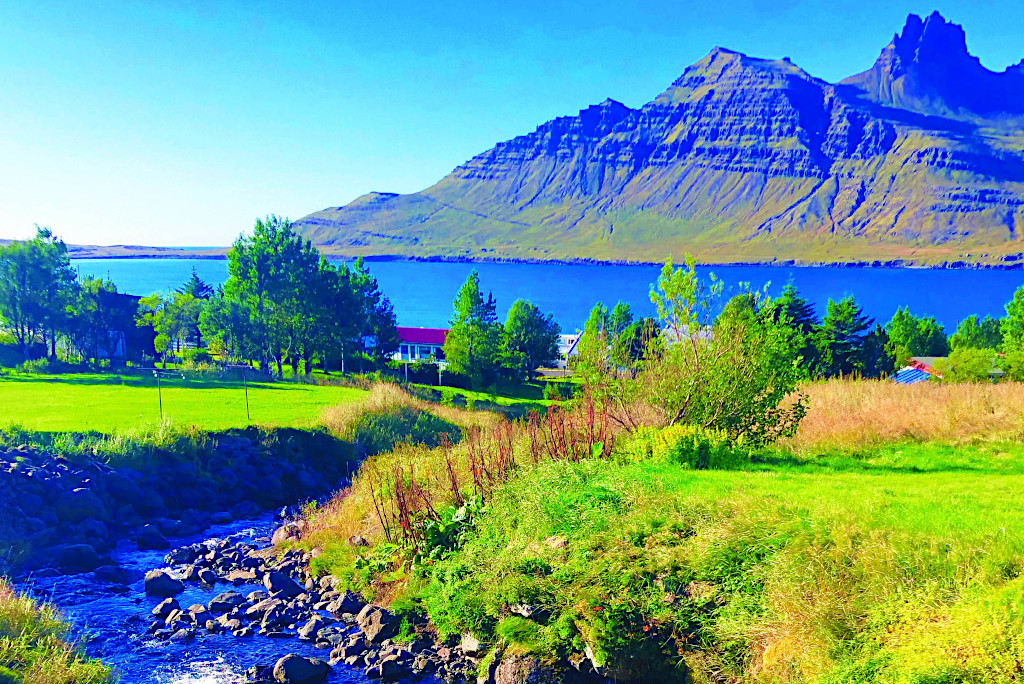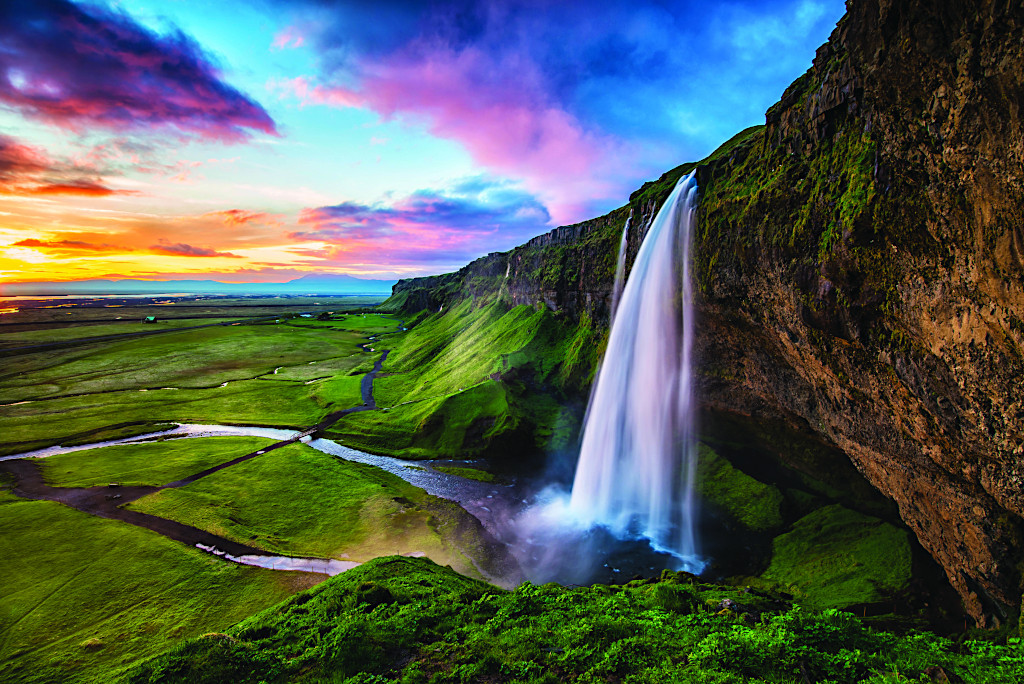If you actually lived in Stoovarfjorour? Yikes. There’s not a bar, let alone a gay one. Through the orange glow of that global nightspot known as Grindr you can still find guys of all ages, but in Iceland the entire country is considered “nearby” and the 400-odd miles to Reykjavik doesn’t exactly make for easy romance, let alone booty calls. Almost 30% of the national population lives in greater Reykjavik, including an even higher percentage of Iceland’s queer population, who appreciate the urbane attitude, arts and hospitality industries, and community groups like Samotkin 78, the major national queer rights advocacy organization.
Yet despite a lack of concentrated queer community throughout most of this rural country, there’s an abundance of inclusion and acceptance. Same-sex marriage, anti-discrimination, adoption and surrogacy rights are all robust. Perhaps even more notably, same-sex couples sharing hotel rooms, dancing in mixed clubs, and holding hands or otherwise displaying affection in public are considered everyday norms. So while Iceland may not be a typical gay hot spot, it offers a notably warm welcome.
Bonus lesson: According to the Icelandic gay men I chatted with online and at Kiki, Reykjavik’s sole gay bar, foreign tourists are embraced; the local scene is small, so visitors’ combination of fresh faces and no strings has undeniable appeal.

Church in Stoovarfjorour
Photo: Joan Vadell
For me, spending four weeks in a small town with stunning natural surroundings and only a single commercial establishment, a combination general store/café/diner, was a creative boon: Marathon writing sessions, long hikes, deep thoughts, and none of home life’s daily distractions. Truth be told, there was also plenty of time to hang out at Brekkan, that ramshackle shop/restaurant, where you can find everything from mittens to canned peaches, romance novels, cheeseburgers, omelets, and duct tape.
Rosemary, the cheerful proprietress, accustomed to Fish Factory foreigners lingering around her premises, was quick to share some of Iceland’s culinary quirks. Most welcome was her solid, though perhaps life-threatening, advice on getting the most short-term enjoyment from Iceland’s traditional rugbrauo, or rye bread. Bearing little resemblance to what’s found in American delis, Rosemary’s homebaked exemplar (Thursdays only) sits about halfway between moist pumpernickel and spice cake, a bit sweet with a remarkably fudgy texture. Selling me a warm loaf, she dispensed this guidance: “However thick you slice the bread, put butter the same thickness on top.”
On Friday evenings, Rosemary and a small crew crank out dozens of pizzas as the shop’s communal tables fill and a parade of well-worn pickup trucks swings by for grab to-go orders. If you’re eating in, pies come to the table accompanied by parmesan, red pepper flakes and, as forewarned, grape or berry jelly.
A quartet of Icelandic acrobats were working at the Fish Factory at the same time I was, and over a shared pizza dinner, I raised an eyebrow and a cringing “What’s up with that?”
“Um,” replied aerialist/tumbler Joachim with a shrug, “It tastes good. The fruit and the cheese is a nice combination.”
Furthering this line of reasoning, topping options at pizza joints throughout Iceland typically extend beyond the likes of sausage, pepperoni, and mushrooms to include sliced bananas. Uninterested in experiencing intestinal versions of the contortions routinely performed by Joachim and company, I passed.
When I asked what other Icelandic specialties I should try, the acrobats informed me that the fermented shark meat, roasted sheep heads, and pastrami-smoked puffins ballyhooed in guidebooks are historic and touristic, primarily consumed by vanishing generations of older Icelanders, attendees of folk festivals, and self-anointed foreign “adventurers” intent on feeding social media as much as themselves.

A Stream to the Sea in Stoovarfjorour
Photo: Jim Gladstone
From WWII through 2006, the United States maintained a large naval operation just outside the Icelandic capital of Reykjavik and, as my new friends explained, elements of American pop culture that appealed to base personnel (from food to entertainment) had a lasting impact on an isolated rural country that had not yet become a nexus of international tourism.
Pizza and burgers are ubiquitous nationwide. Reykjavik has a punk rock museum, and a restaurant called the Chuck Norris Grill. In the Eastern City of Egilsstadir, there’s a Happy Days-style diner with red vinyl booths, a jukebox full of American ‘50s singles, and several giant statues of Betty Boop (but such is the blur of non-native nostalgia). All Icelandic children learn English beginning in grade school and virtually everyone under 60 speaks it fluently.
Still, beneath the veneer of familiarity that has made tourists from the U.S. feel at ease visiting Iceland (440,000 Americans came in 2019, almost 25% of all foreign visitors) is an alluring strangeness. The mundane and the fantastic are seamlessly interwoven.


